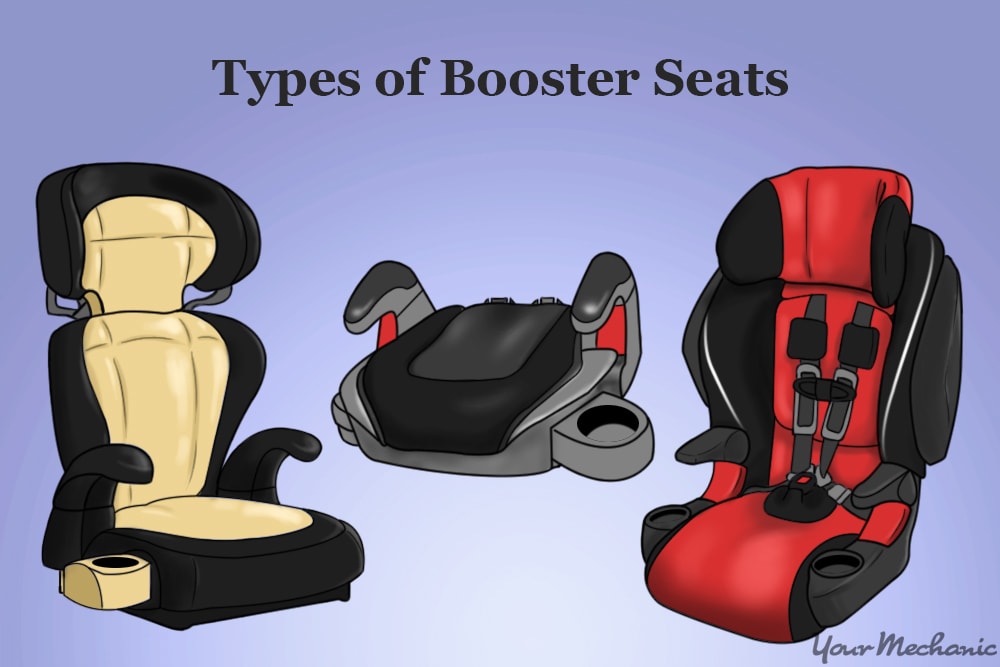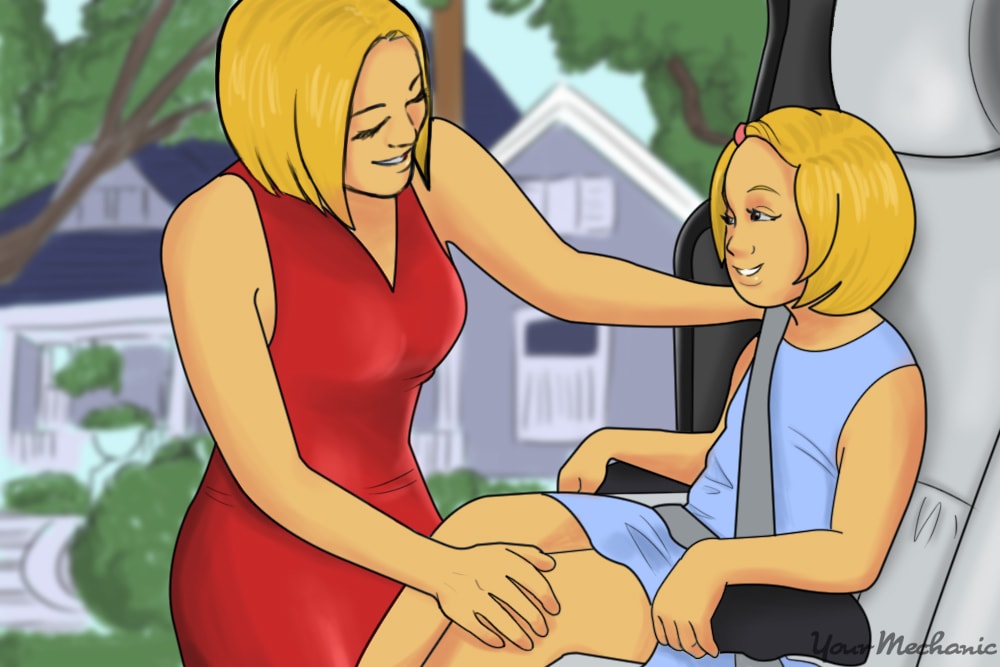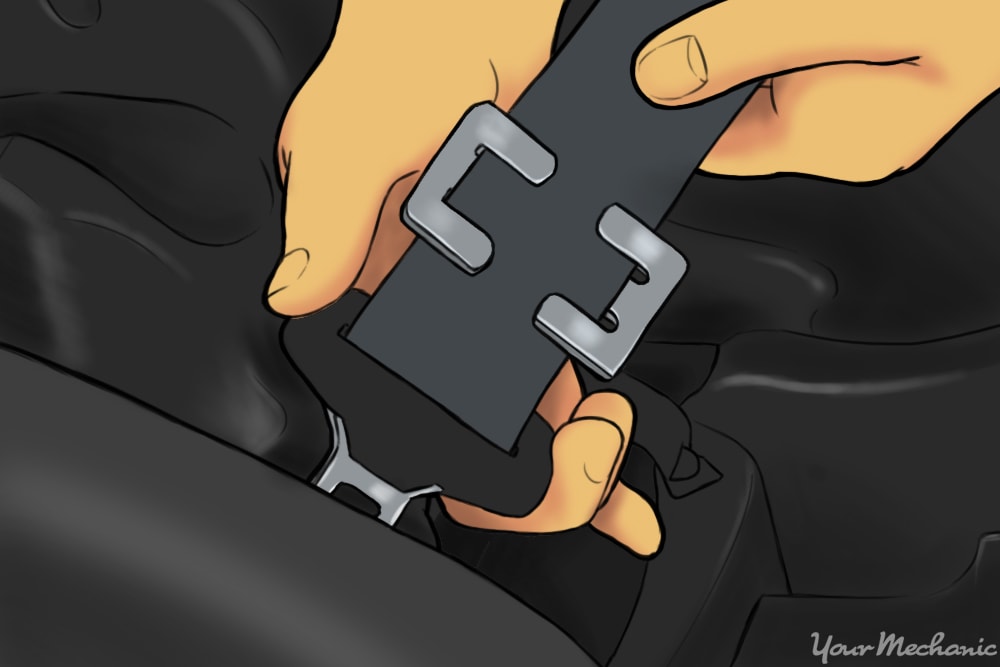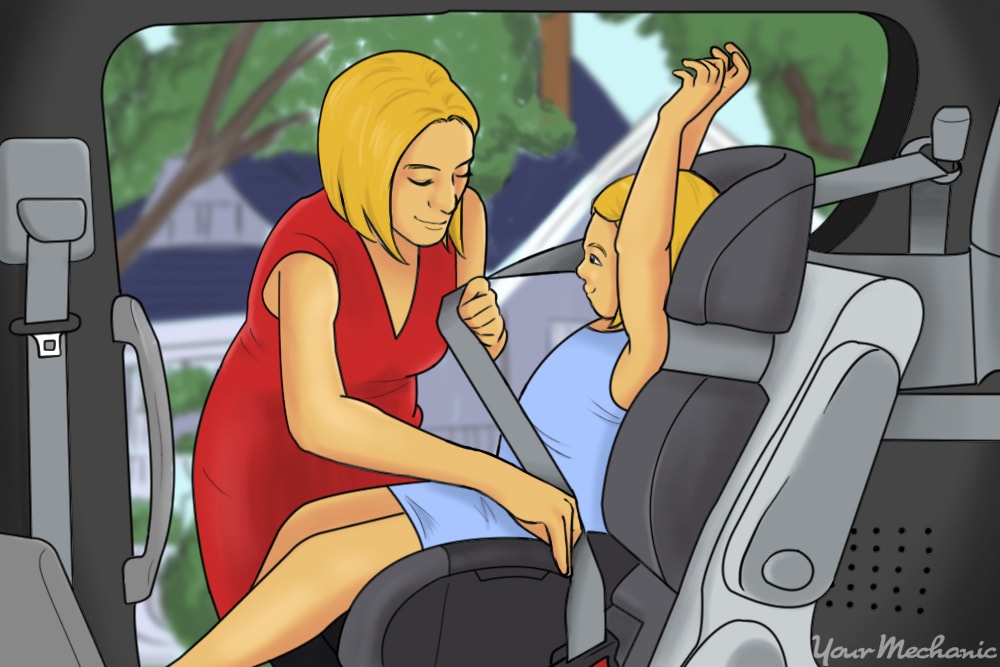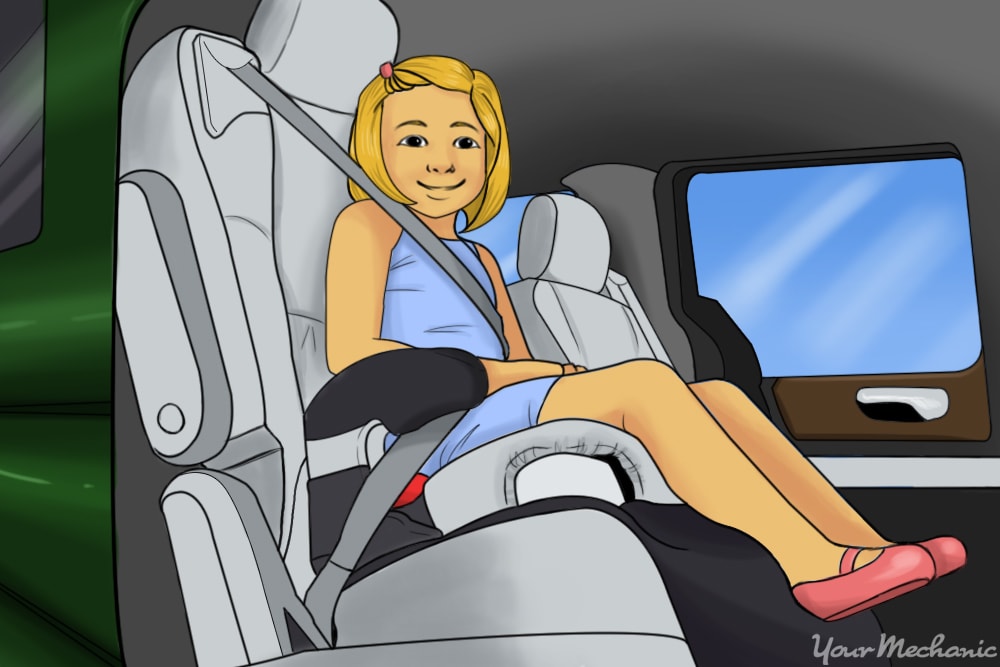

Booster seats are important safety features for young children. When a child has outgrown their child restraint system, but is not yet big enough to safely fit the adult-sized lap and shoulder belts, it is time for them to use a booster seat.
A booster seat raises the height of the child, so that they sit in the same place that a taller person would. This makes them much more safe and secure in the event of an accident, and can prevent serious injuries and fatalities. If your child is a size that requires a booster seat, always make sure that they are safely secured in one while driving. Thankfully, it’s very easy to find, purchase, and install booster seats.
- Note: You can tell if your child needs a booster seat if they are at least 4 years old, 40 pounds or more, and their shoulders sit higher than the child restraint seat that they were previously using. If you are unsure about your state laws, you can visit iihs.org to view a map with laws and regulations for child restraint and booster seats.
Part 1 of 2: Picking the right booster seat for you and your child
Step 1: Choose a style of booster seat. There are many different styles of booster seats. The most common are high back booster seats and backless booster seats.
High back booster seats have a back that rests against the rear seatback, while backless boosters seats simply provide a higher seat for the child with the original seatback providing support for the back.
Your child’s height and posture, and the space in your rear seat can determine which style is best for you.
Some booster seats are manufactured as a universal fit for the majority of makes, models, and child sizes. Other boosters are more specific to the child’s size and the type of car.
- Tip: There is a third style of booster seat called the combination child safety seat and booster seat. This is a child restraint system that can be converted into a booster seat when the child becomes big enough.
Step 2: Make sure the booster seat is compatible with your car. Before ordering a booster seat, you should double check to make sure that the seat will fit in your car.
The booster seat should always sit flat and level on the rear seat without extending over the edge of the seat. You should always be able to wrap one of the rear seat belts around it.
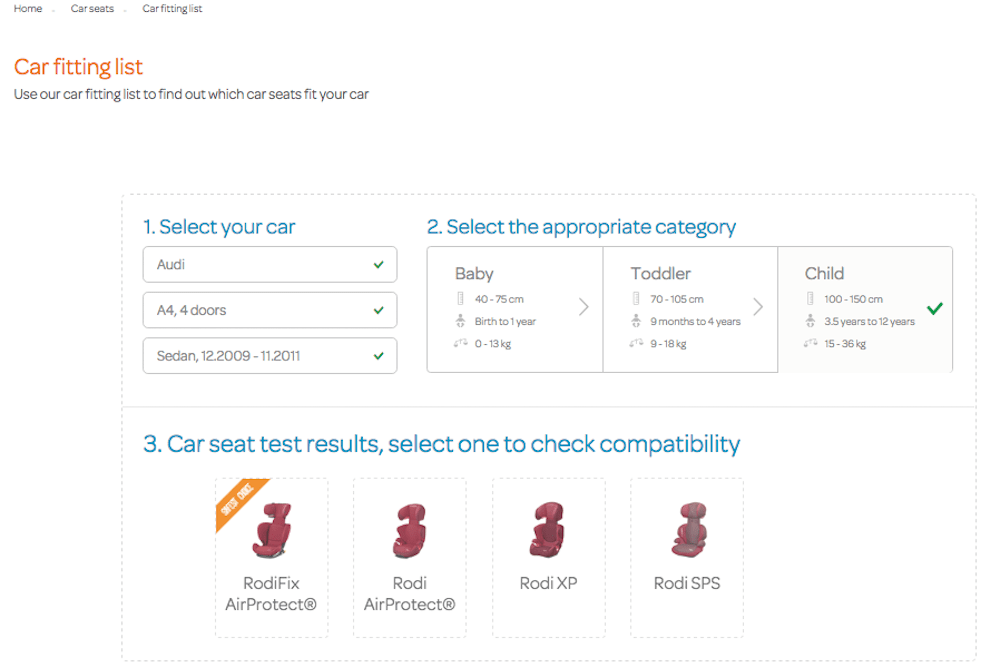
Tip: You can visit the website with Max-Cosi.com to enter your vehicle’s make, model, and year to see which booster seats are recommended for your car.
Note: Some booster seats do not come with more information about compatibility. In these cases, you should contact the seller to see if the booster seat can fit your vehicle. You can also order the booster seat, and be prepared to return it if it does not fit your car.
Step 3: Find a booster seat that fits your child properly. If your child is not comfortable in their booster seat, then you should not use it.
After you purchase a booster seat, have your child sit in it, and ask them if they are comfortable.
Warning: If the booster seat is uncomfortable for the child, they can experience back or neck pain, and may be more be susceptible to injury in the case of an accident.
Tip: After finding the booster seat that is right for you and your child, you should register the seat. Registering the seat ensures that your seat is under warranty should something go wrong with the booster seat.
Part 2 of 2: Installing the booster seat in your car
Step 1: Choose a position for the booster seat. The rear center seat is statistically shown to be the safest location for a booster seat. However, if it doesn’t fit there, you can use one of the rear side seats instead.
Step 2: Secure the booster seat with any included clips. Some booster seat come with clips, guides, or tethers, to help secure the booster to your rear seat cushion or seatback.
Other booster seats do not have clips or tethers, and simply require placing the booster flat on the seat and firmly against the seatback before securing the shoulder and lap belt.
- Warning: Always follow the instructions provided by the booster seat manufacturer first. If the owner’s manual says there are more steps to installing a booster seat, follow those steps.
Step 3: Buckle up your child. Once the seat is in place and secured, have your child sit in it. Make sure that they are comfortable, and then run the seatbelt across their body to buckle it.
Give the seat belt a gentle tug to make sure that it is properly fastened and tight.
Step 4: Frequently check in with your child. To make sure that the booster seat is staying in position, periodically ask your child if they are comfortable, and frequently check the belt to make sure it is still securely fastened and properly tight.
After the booster seat is successfully installed, your child will be able to keep riding safely in your vehicle. Any time you have your child with you, make sure that they are safely fastened in the booster seat (until they have outgrown it). When your child is not with you, secure the booster seat to the car with a seat belt or place it in the trunk. This way, it will not fly recklessly around the car in the event of an accident.
If at any point in the process you feel uncomfortable with the installation of the booster seat, you can get assistance from a certified mechanic, such as one from YourMechanic, to come out and do this job for you.


